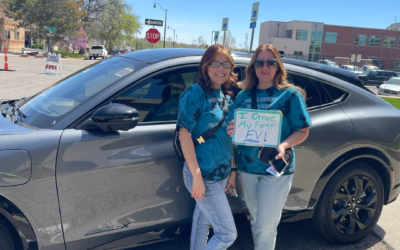
Myth: EVs don’t drive well in winter weather.
Myth Busted: EVs are great in winter weather because of their weight distribution and maneuverability. There is no significant difference between driving an EV and driving an internal combustion other than a drop in range.
As Colorado drivers, one of the most important facets of buying a new car is knowing how well it drives in the winter. We get our fair share of ice and snow, especially up in the mountains, and we need vehicles that are reliable in this kind of weather.
With electric vehicles (EVs) becoming more popular across the state, there is a question that needs to be answered: Do EVs drive well in the winter?
Electric vehicles are actually great cars for winter driving. This is because the weight is dispersed more evenly on the bottom of the vehicle, allowing for better handling and making them harder to flip. Additionally, many EVs have dual motors on the front and back axels, making for better maneuverability.
The only time EVs really struggle is on steep inclines or in very deep snow, something that all non-4WD vehicles experience. Putting winter tires on your EV or carrying snow chains, as you would for an internal combustion vehicle, helps tremendously.
While EVs don’t handle poorly in the winter, they do experience a drop in range in colder weather, mainly because driving on snow-covered roads requires more energy than dry pavement. The heater also drops the range by 10–15%. On the bright side, since it takes more energy to heat up your EV than it does to keep it at a higher temperature, you can minimize the drop in range by pre-heating your vehicle while it is still charging. It is important to note that internal combustion vehicles also experience a drop in range in the winter, but it is less pronounced compared to an EV.
Source: TransportEvolved. “Winter Weather and Electric Cars: Here's What You Need To Know.” YouTube, YouTube, 2 Nov. 2018, www.youtube.com/watch?v=VHI4YU6zmGA&feature=youtu.be.




